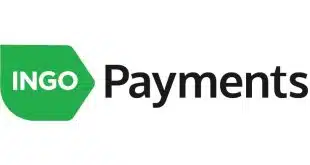Agents with independent sales organizations or even large merchant processors trying to sell prospective merchants on new point-of-sale technology can get the attention of decision makers, but only if they anticipate how a smart merchant will make a complex buying decision, a senior executive with the nation's largest restaurant chain by locations told attendees at an ISO conference Wednesday in Chicago. The basic question a prospective buyer will ask is no surprise?”how does this technology improve my business?”?but it can be broken down to address more detailed concerns, James Schockett, senior manager of global cash management at Yum! Brands Inc., said at a technology panel session during the Electronic Transactions Association's Strategic Leadership and Networking Forum. Yum operates or franchises 17,825 KFC, Pizza Hut, Taco Bell, A&W, and Long John Silver restaurants in the U.S. Schockett presented his detailed questions from the perspective of the top managers of major corporate departments whose functions in a small business may be handled by just one or only a few people. While Louisville, Ky.-based Yum obviously is a large company, Schockett noted that he that he often talks with franchisees who own just one store so his points could apply to small merchants. Shockett said ISOs and other resellers of POS payment systems should be prepared to address these concerns: –Human resources: Vendors often say training employees to use new technology is a breeze. If learning to use a new POS terminal takes each employee just 12 minutes, that still translates into 20,000 man-hours for a big company such as Yum with 100,000 people to train, Schockett pointed out. Even in small companies, training sessions take time that could be devoted to other productive uses, so the ISO should have some very good reasons why its new hardware and software deserves that time. –Legal: Does the technology create new risks that must be addressed? Is the acquirer prepared to indemnify the merchant? –Operations: In a restaurant, operations managers will want to know what the POS technology does for speed of service. –Finance: Return on investment is the top concern: What are the labor savings? “How and when do I see the money?” Shockett asked. –Marketing: Those in charge of building sales will want to know if the new technology could be included in the company's advertising and if and how it could be used to increase customer loyalty, thereby encouraging repeat business. Rephrased, the key question, according to Schockett, is, “Overall, does it matter enough?or at all?in my business to warrant priority over many competing projects?” While Yum's fast-food chains are especially concerned with quick processing of payment card transactions at the point of sale, upscale department store Nordstrom Inc. has much different concerns, according to another panelist. Nordstrom's POS strategy flows from the notion of allowing customers to make unhurried decisions and use any payment form they want, and that the point of sale is a “workstation” for employees, said Kevin Knight, president of Seattle-based Nordstrom's credit division. As a credit and debit card issuer, Nordstrom does prefer that customers use its cards, but it doesn't steer them, he says. Check use in Nordstrom's stores is declining, Knight noted, with many transactions that would have been made with checks now going to debit cards. Nordstrom has PIN pads on its countertops. “Without saying anything, a lot of customers use it on their own,” he said.
Check Also
QorPay Adds Services From Visa’s Cybersource to Its Payments Menu
QorPay Inc. reported Thursday that it has integrated its payment technology with Visa Inc.’s Cybersource …







